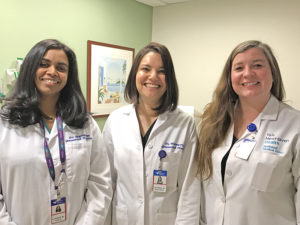
Greenwich Hospital has launched a limb preservation program that diagnoses and treats patients with difficult-to-heal wounds and other medical conditions and may be at risk of losing a limb to amputation.
The interdisciplinary approach allows Greenwich Hospital specialties from multiple disciplines ”” wound care, podiatry, cardiovascular, infectious disease, orthopedics, physical medicine, rehabilitation and behavioral and nutritional support services ”” to easily provide coordinated patient care at one location.
“The combined expertise of these specialists enables high-risk patients to be diagnosed early so they receive timely treatment to help preserve threatened limbs and prevent major amputations,” said Dr. Sandra Wainwright, medical director of the hospital”™s Center for Hyperbaric Medicine and Wound Healing. The outpatient center offers specialized wound care and hyperbaric oxygen therapy with two, single-person hyperbaric chambers.
“Preventive measures and advanced wound care techniques are critical, especially when you consider that the five-year mortality rate for people who have undergone an amputation is 68 percent,” said Kristen McGinness, a Greenwich Hospital podiatrist.
Nonhealing foot and leg wounds ”” which can be caused by diabetes, poor circulation or physical trauma ”” prevent millions of people from doing the things they love. Amputations resulting from nonhealing foot ulcers is one of the most devastating outcomes of diabetes, yet up to 85 percent of these amputations are preventable, health experts report.
People with peripheral arterial disease, critical ischemic limb disease and other cardiovascular conditions are also at increased risk of losing a limb.
“Patients with poorly healing ulcers may benefit from simple office or hospital procedures to improve the circulation to the legs, which may ultimately promote wound healing and avoid amputation,” said Dr. Sasanka Jayasuriya, an interventional cardiologist at Greenwich Hospital. “Patients with vascular disease also commonly have advanced heart disease. We use the multidisciplinary evaluation as an opportunity to screen patients for coronary artery disease that by itself could be life threatening.”
Therapies used at the Center for Hyperbaric Medicine and Wound Healing include debridement (removing damaged skin), compression wraps, regenerative medicine, negative pressure therapy and hyperbaric oxygen therapy, which uses prescribed doses of high pressure oxygen to treat wounds.





















